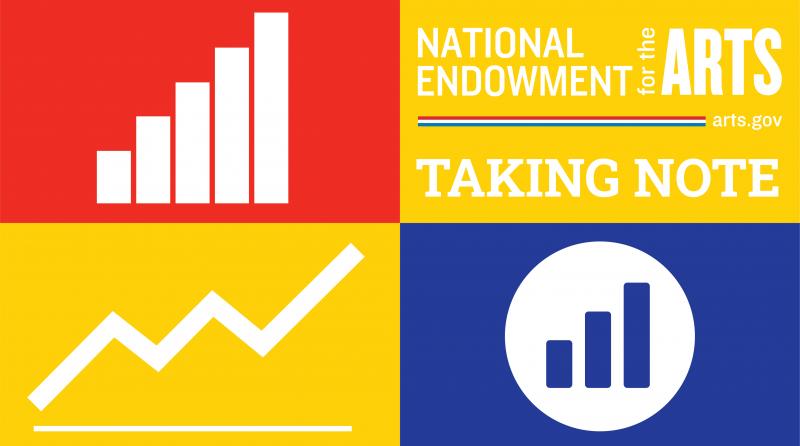Taking Note: COVID-19 Economic Outlook and Recovery for the Arts—More Statistics (and Stories)

Last year, soon after COVID-19 took hold in the U.S., my colleague Bonnie Nichols and I used this space to report periodically on the economic toll of the pandemic for arts organizations and artists and other cultural workers. For our purposes, we analyzed and presented the most recently available data from federal statistical agencies such as the U.S. Census Bureau, the Bureau of Labor Statistics, and the Bureau of Economic Analysis. (Some of these findings appeared over the holidays in a New York Times article.) All the while, we were aware that national rates of unemployment or box-office spending, to take two indicators, do not fully capture the palpable hit to the arts and cultural sector.
What will the “new normal” look like for the arts? This was the topic of a June 8, 2020 virtual symposium held by the NEA Research Lab at Indiana University-Purdue University Indianapolis. As we embark on 2021, the question is no less relevant. Recognizing the vulnerability of a sector so critical to the entire economy and to society itself, FEMA and the Argonne National Laboratory have partnered with the Arts Endowment to produce an analysis as part of their “COVID-19 Weekly Outlook” paper series about recovery efforts.
For similar reasons, the U.S. Chamber of Commerce is joining the Arts Endowment, the National Assembly of State Arts Agencies, and Americans for the Arts, to host a Jan. 11, 2021 web event titled, “Starring Role: Arts & Entertainment in the Pandemic Era.” Apart from a “fireside chat” with U.S. Chamber President Suzanne Clark, Arts Endowment Chairman Mary Anne Carter, and actress Annette Bening, the event will feature panels on the arts and the economy, the effect of COVID-19 on small businesses in the arts, and related topics.
While these activities were in the planning stages, the President signed into law a coronavirus relief package and spending bill that will permit the Small Business Administration to award $15 billion in grants to live arts and entertainment venues in economic distress. Projected beneficiaries include music, theater, and film venue operators and agents. As the FEMA paper explains, arts organizations have seen sizable cuts to their earned income because of shuttered facilities, stay-at-home orders, caps on attendance at public gatherings, and many people’s general inclination not to venture out. But such establishments are also incurring new costs in adapting spaces, pursuing digital strategies more aggressively, and adopting and enforcing safety protocols.
Some of these challenges were identified in The Art of Reopening: A Guide to Current Practices Among Arts Organizations During COVID-19, a newly released publication from the Arts Endowment, based on survey results and case study interviews. An article on these findings appeared in the latest issue of the agency’s magazine, American Artscape.
Along with these products, over the last few weeks the Arts Endowment released “Paths to Participation: Understanding How Art Forms and Activities Intersect,” a research brief. Using nationally representative survey data, it shows that electronic and digital consumption of the arts is positively correlated with attending in-person arts events. (Specifically, adults who used media to consume visual art or music, dance, or theater performances were at least five times as likely as other adults to attend live arts events—even after the analysis had accounted for demographic variables.) With so many of us devouring online entertainment (e.g., web streaming services) while stationed at home, this apparent link between virtual and in-person arts engagement lends a modicum of hope, despite the uncertainty about the lasting effects of the pandemic on arts attendance patterns.
(Note: Click here to register for the Jan. 11 virtual event, “Starring Role: Arts & Entertainment in the Pandemic Era.")




